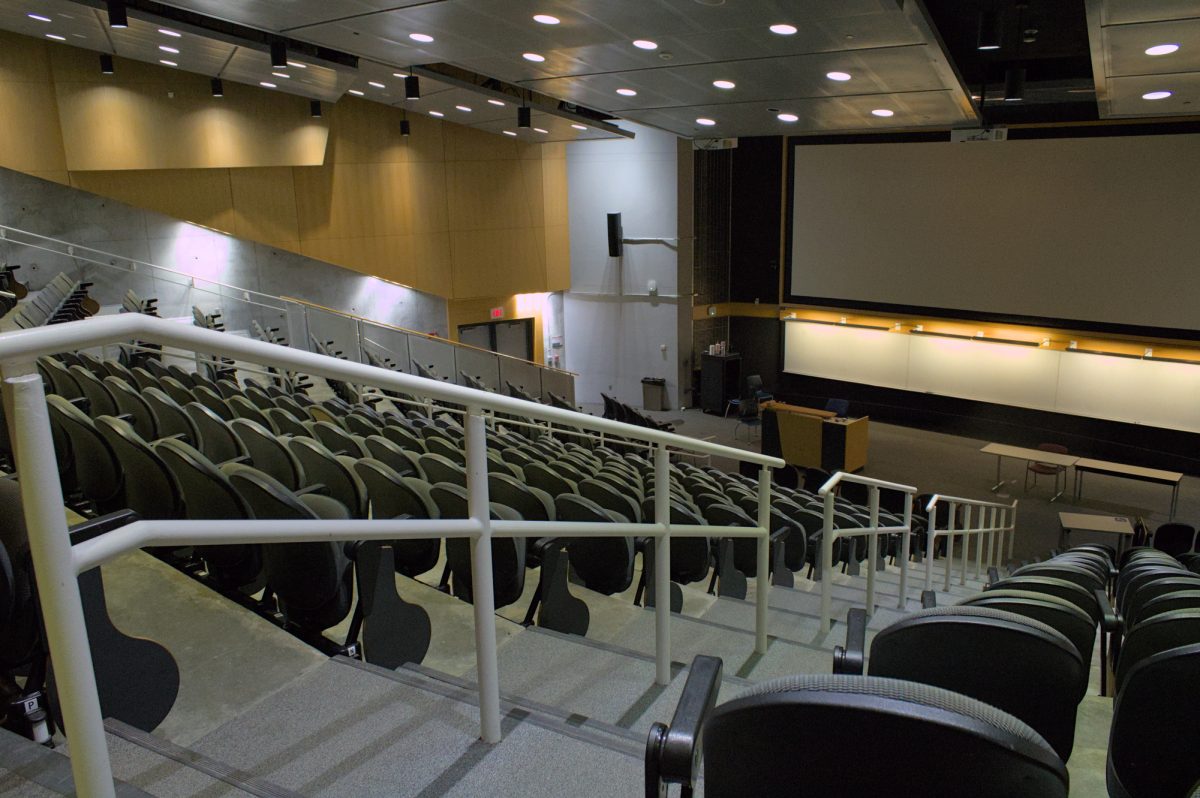Art glass shines at Brunnier exhibit
April 21, 1999
The Brunnier Art Museum recently opened its doors to a most magnificent and beautiful art glass exhibit.
Titled “The Golden Age of Art Glass: 1870-1939,” the exhibit features over 200 pieces of glass that exemplify remarkable achievements in the art glass industry.
“It follows an industrial movement as well as a strong social movement,” said Lynette Pohlman, director of University Museums. “They were able to make glass that was larger scale. They had lots of colors, and there were lots of textures and motifs they were able to put on the glass.”
The exhibit includes a variety of examples of cameo glass, made from carving through colored layers of glass; case glass, made from layers of contrasting colors; cut glass; blown glass and pressed glass.
Three major style movements are featured. The styles, Victorian, Art Nouveau and Art Deco, were periods that occurred between 1870-1939.
“[Victorian] has to do with lots of different textures and lots of different technology,” Pohlman said. “It’s very ornate. It’s a full visual exploration of technology, science and art.”
Walking into the exhibit, patrons are greeted by what is perhaps the most exquisite Victorian piece being featured. The “Amberina Vase on Matching Base” was created by Ludwig Moser.
The mammoth vase, colored in transparent red and gold colors, is immersed with flowers, fruits, birds and insects, and presents probably the most advanced technological achievement of the time.
The Art Nouveau section features many works by well-known glassmaker Louis Comfort Tiffany.
“Art Nouveau started in Europe,” Pohlman said. “It parallels French Impressionist painting. It’s known for sinuous lines, willowy shapes and asymmetrical designs.”
The Art Deco period occurred near the end of the “Golden Age,” and the glass creations were even more simplified than those that came before.
“Stylistically it is characterized by strong locomotion. It’s very streamlined,” Pohlman said. “‘Speed,’ ‘technology’ and ‘efficiency’ became key words of that art movement.”
Besides stylistic movements, the exhibit also addresses the aesthetics, technology and cultural aspects of art glass.
An interesting feature in the cultural area of the exhibit is the collection of ornate lamps. Mostly giving off rose-colored light, some of the lamps also have landscapes displayed on the glass lampshades.
“I gotta admit they didn’t give off a lot of light, but they looked beautiful,” Pohlman laughed. “They’re better than a candle or kerosene.”
One-third of the exhibit comes from the Brunnier’s own collection. Pohlman said the museum has one of the finest collections in the country, spanning from 2000 B. C. to the present.
The rest of the exhibit is on loan from members of the Iowa Questers, an antique study and historic preservation group. Pohlman said the non-profit organization is very passionate about collecting and researching, which makes its partnership with the museum ideal.
“These people are helping us further develop our glass collection by making gifts of glass, raising money to help us buy, and helping build an even better glass collection,” Pohlman said.
Pohlman believes the exhibit is important because people can learn something.
“It’s aesthetically pleasing, and I think it’s enjoyable,” she said.
The exhibit is truly a remarkable display of the aesthetics and beauty of art. Whether it be the “Cameo Vase” by Emile Galle or the “Gold Metallic Urn” by Johann Loetz, art glass-lovers and art-buffs alike will certainly fall in love with the shimmering beauty of “The Golden Age of Art Glass.”
“The Golden Age of Art Glass: 1870-1939” will be on display in the Brunnier Art Museum through Aug. 8, 1999. Admission is free.






